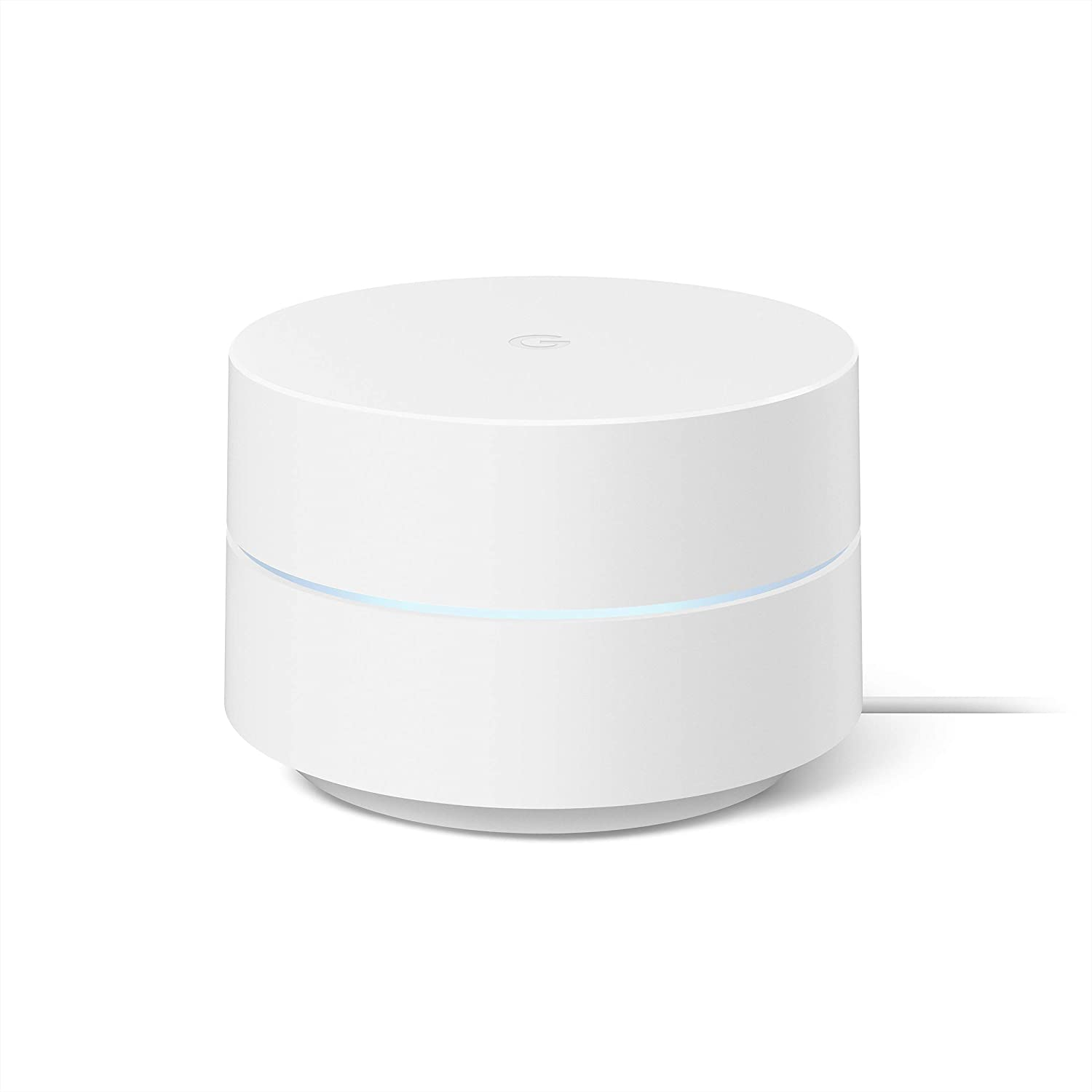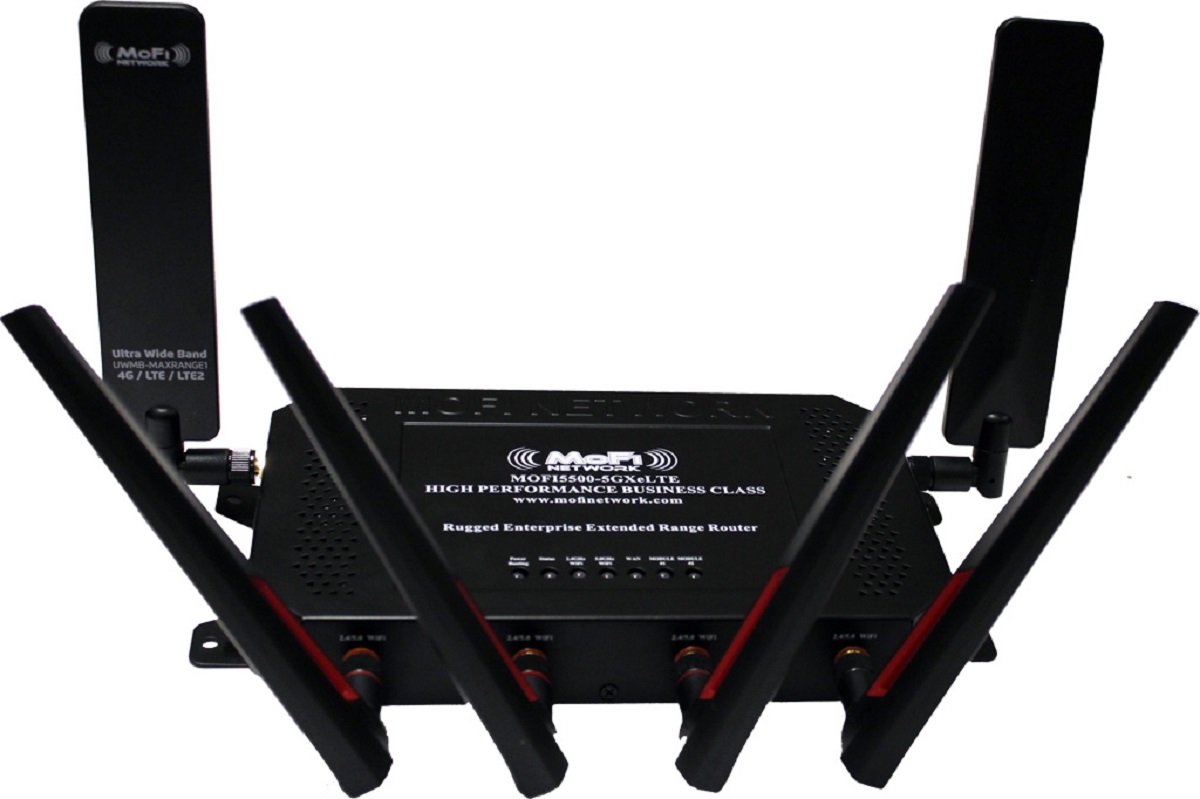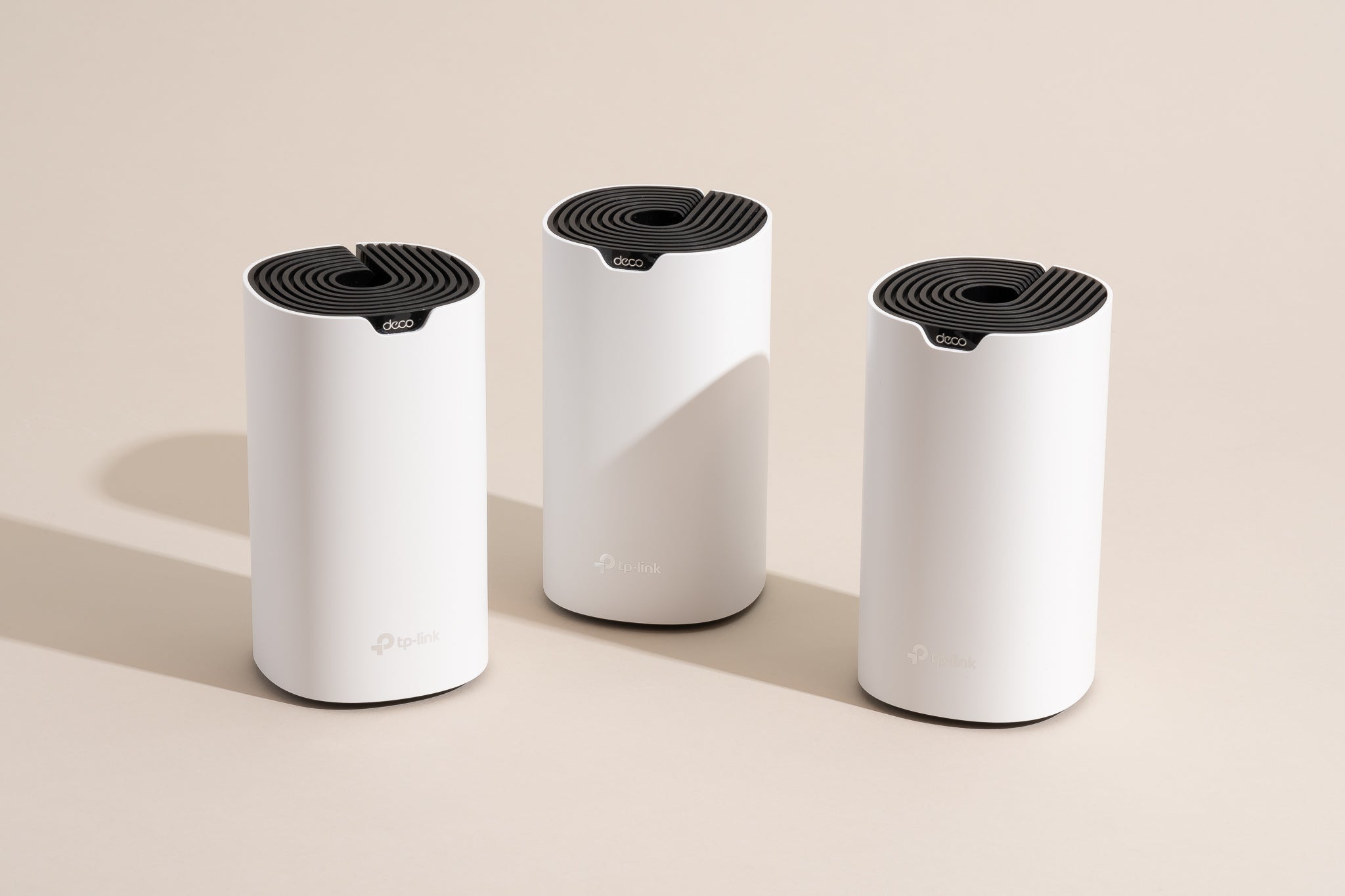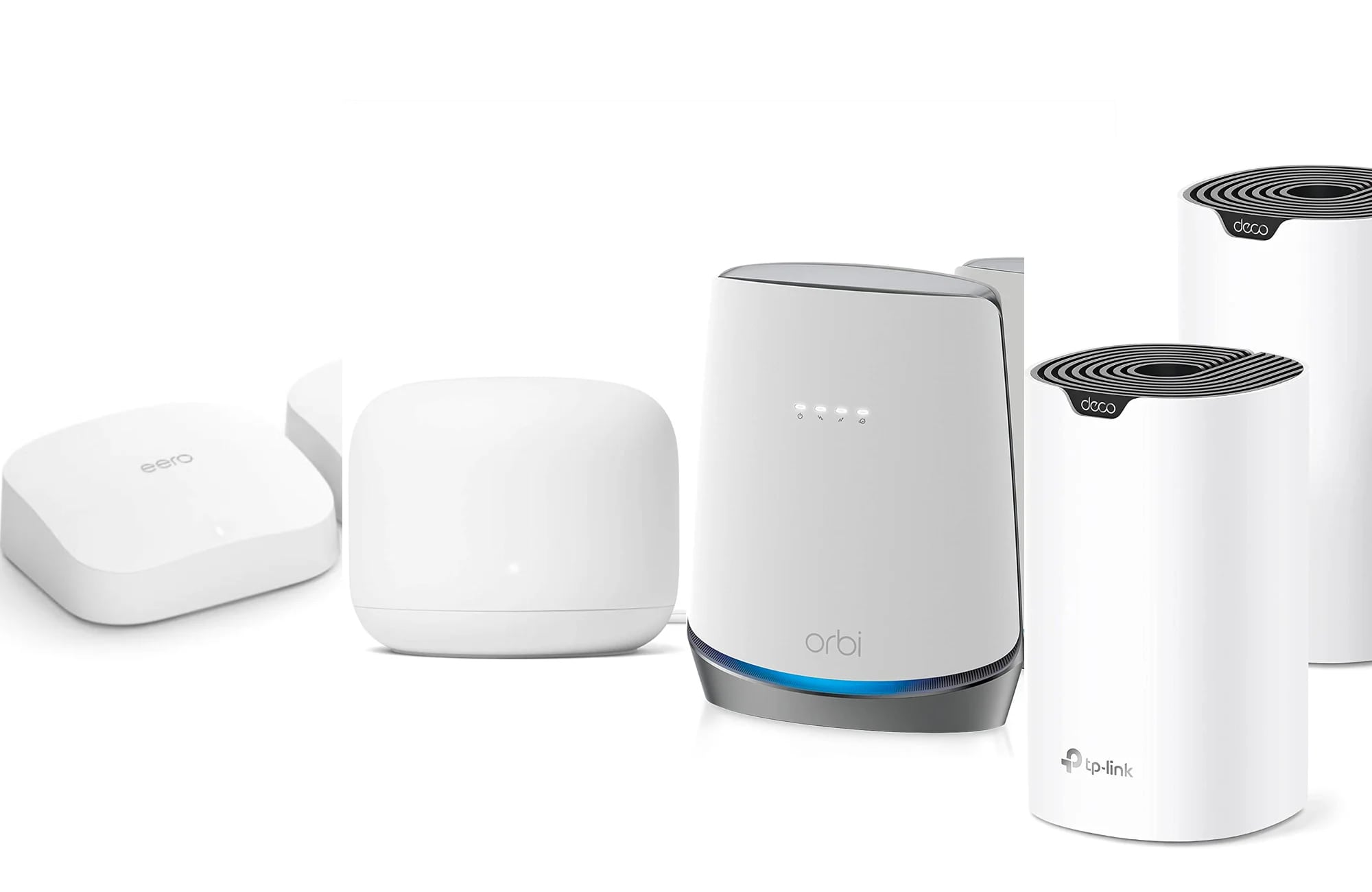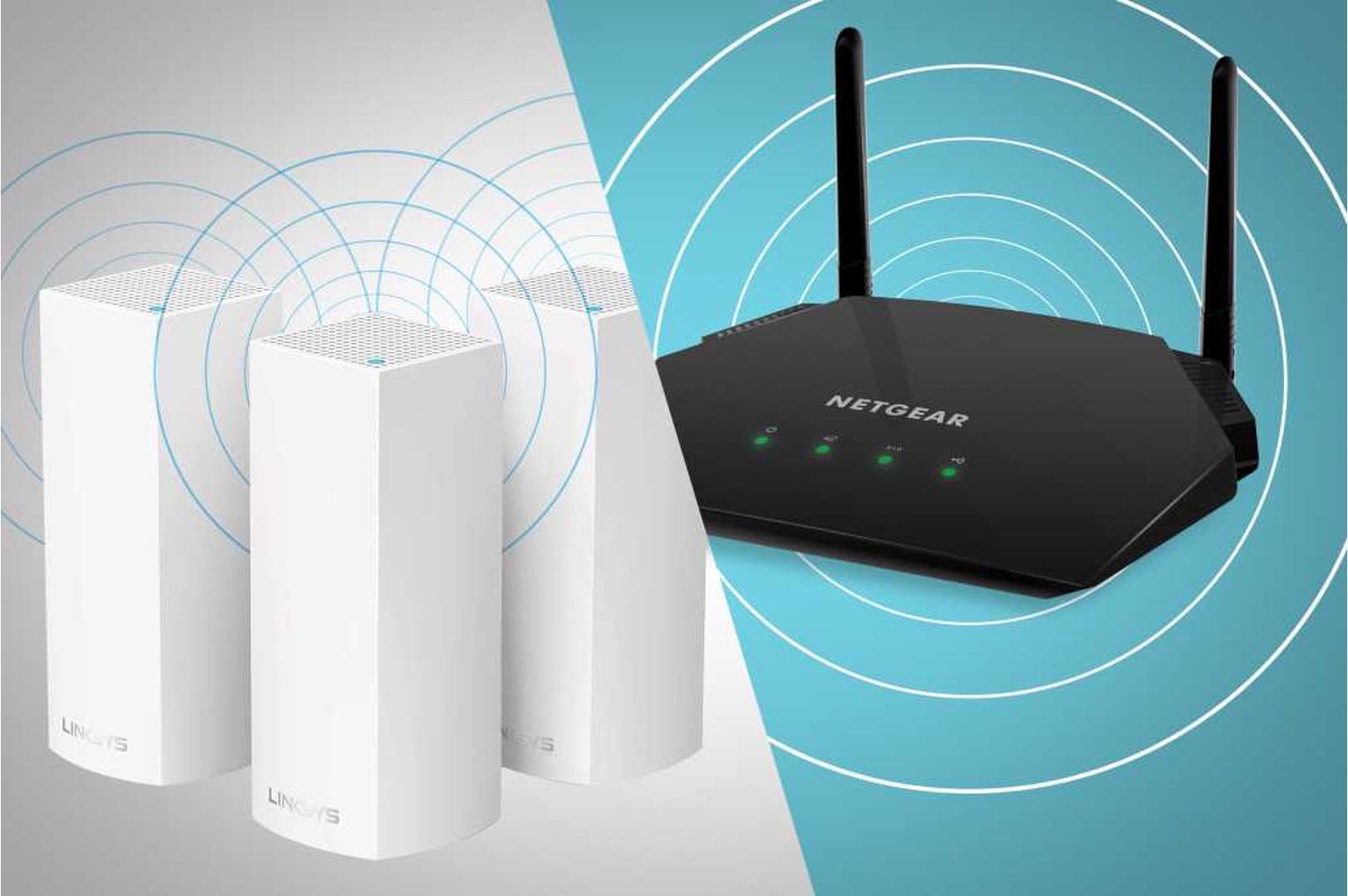Introduction
Welcome to the world of mesh routers, where seamless and reliable Wi-Fi coverage is finally within reach. In today’s digitally connected homes, having a strong and stable Wi-Fi signal in every corner has become a necessity. Fortunately, traditional single-router setups are being replaced by more advanced and efficient mesh router systems. In this article, we will explore the concept of mesh routers and discuss how many of these devices you can have in your home to ensure optimal coverage.
Gone are the days when a single router was sufficient to provide reliable Wi-Fi throughout a home. With the increasing number of connected devices and the demand for high-speed internet in every room, traditional routers often struggle to deliver consistent performance in larger homes or spaces with complex layouts. This is where mesh routers shine.
Mesh routers revolutionize home networking by creating a unified network that extends the Wi-Fi coverage throughout your entire home. They consist of a primary router and several satellite nodes that work together to create a mesh network, eliminating dead zones and providing a more stable connection.
The benefits of using mesh routers are plentiful. First and foremost, they ensure a strong and consistent Wi-Fi signal in every room, enabling seamless streaming, online gaming, and browsing from any device. Mesh routers also offer easy setup and management through intuitive mobile apps, allowing you to monitor and control your network with ease.
Now that we understand the advantages of mesh routers, let’s delve into the question of how many of these devices you can have in your home. The answer depends on several factors, including the size and layout of your home, the internet speed and bandwidth requirements, and the presence of any interference or obstacles within your living space.
Throughout the remainder of this article, we will explore these factors in detail and provide you with practical tips for optimizing the performance of your mesh router system. So, let’s dive in and discover the ideal number of mesh routers for your home!
What are mesh routers?
Mesh routers are a modern approach to home networking that provides reliable Wi-Fi coverage throughout your entire home. Unlike traditional single-router setups, mesh routers employ multiple devices working together to create a unified network, ensuring a strong and stable connection in every corner of your house.
At the heart of a mesh router system is the primary router, which serves as the main hub of your network. It is typically connected directly to your modem and acts as the central point for data transmission. To extend the Wi-Fi coverage, satellite nodes or access points are strategically placed throughout your home, forming a mesh network.
The primary router communicates with the satellite nodes wirelessly, creating a network infrastructure that allows for seamless device roaming and a consistent signal strength. Each node functions as a Wi-Fi access point, effectively extending the coverage and eliminating dead zones or areas with weak signals.
One of the key advantages of mesh routers is their ability to self-organize and optimize the network. Through advanced algorithms, the devices intelligently distribute the network traffic to ensure the fastest and most efficient connection. This dynamic routing capability ensures that you always have the best possible Wi-Fi experience, regardless of your location within the mesh network.
Additionally, mesh routers often come with intuitive mobile apps that simplify the setup and management process. These apps allow you to easily configure and customize your network settings, monitor connected devices, and perform firmware updates. With just a few taps on your smartphone, you can have complete control over your mesh router system.
Overall, mesh routers are a robust solution for achieving reliable and widespread Wi-Fi coverage in your home. Whether you have a multi-story house, a large property, or simply struggle with signal strength in certain areas, a mesh router system can eliminate these connectivity issues and enhance your internet experience.
In the following sections, we will explore in more detail how many mesh routers you can have in your home, taking into consideration various factors such as the size of your home, internet speed requirements, and potential sources of interference. By the end, you’ll have a clear understanding of how to optimize your mesh router setup and ensure maximum coverage and performance across your entire living space.
Benefits of using mesh routers
Mesh routers offer numerous benefits that make them an ideal solution for achieving reliable and seamless Wi-Fi coverage in your home. Let’s explore the advantages of using mesh routers:
1. Comprehensive coverage: The primary advantage of mesh routers is their ability to eliminate Wi-Fi dead zones and provide consistent coverage throughout your entire home. With multiple access points strategically placed, mesh routers ensure that every room, floor, and corner of your house has a strong and reliable Wi-Fi signal.
2. Seamless roaming: With a mesh router system, you can move freely throughout your home without experiencing any drop in the Wi-Fi connection. As you move from one area to another, the devices automatically hand off the connection between access points, ensuring uninterrupted connectivity and seamless roaming.
3. Scalability: Mesh router systems are highly scalable, allowing you to add more nodes as needed to expand the coverage area. Whether you have a small apartment or a sprawling mansion, you can easily customize the number of nodes to meet your specific needs, ensuring optimal coverage in every part of your home.
4. Easy setup and management: Setting up a mesh router system is typically straightforward, thanks to user-friendly mobile apps and intuitive interfaces. Most manufacturers provide step-by-step instructions to guide you through the installation process, making it accessible for users with varying technical expertise. Managing and monitoring your network is also simplified with these apps, allowing you to easily control settings, perform updates, and monitor connected devices.
5. Enhanced performance: Mesh routers utilize advanced technologies, such as tri-band or dual-band networks and beamforming, to optimize performance and minimize interference. This results in faster speeds, reduced latency, and improved overall network performance, especially in congested environments where multiple devices are connected simultaneously.
6. Future-proofing: Mesh router systems are designed to adapt to future technologies and evolving connectivity requirements. Their modular nature allows for firmware updates and the integration of new features, ensuring that your network remains up-to-date and capable of supporting the latest devices and technologies.
With these benefits in mind, it’s clear that mesh routers offer a superior solution for achieving reliable and comprehensive Wi-Fi coverage in your home. In the following sections, we will delve into the factors that determine how many mesh routers you should have in your home, enabling you to optimize your network and enjoy uninterrupted connectivity throughout your living space.
How many mesh routers can you have in your home?
The number of mesh routers you can have in your home depends on several factors, including the size and layout of your living space, the internet speed and bandwidth requirements, and the presence of any interference or obstacles that may affect Wi-Fi signals. Let’s explore these factors in more detail:
1. Coverage area and number of floors: The size of your home and the number of floors play a crucial role in determining the number of mesh routers you need. Larger homes or multi-story houses typically require more mesh routers to ensure comprehensive coverage. As a general guideline, a single mesh router can cover around 1,500 to 2,500 square feet. If your home exceeds this range or has multiple floors, you may need additional routers to provide adequate coverage.
2. Internet speed and bandwidth requirements: Consider the internet speed and bandwidth demands of your household when determining the number of mesh routers needed. If you have a high-speed internet plan with multiple users engaging in bandwidth-intensive activities such as streaming 4K videos or online gaming, you may require more mesh routers to distribute the load and maintain optimal performance across devices.
3. Interference and obstacles within your home: The presence of other electronic devices, walls, furniture, or other obstacles can interfere with Wi-Fi signals and impact coverage. If your home has many obstructions or experiences interference from neighboring networks, you may need additional mesh routers placed strategically to overcome these obstacles and ensure a strong signal throughout your home.
It’s important to note that while adding more mesh routers can enhance coverage and performance, there is a limit to the number of routers that can be effectively used in a mesh network. Having too many routers in close proximity can lead to interference and signal degradation. It’s recommended to consult the manufacturer’s guidelines or seek professional advice to determine the optimal number of mesh routers for your specific situation.
By carefully considering the size of your home, internet speed requirements, and potential sources of interference, you can determine the ideal number of mesh routers needed to achieve reliable and comprehensive Wi-Fi coverage.
Next, we will explore tips for optimizing the performance of your mesh router system, ensuring that you get the most out of your network and enjoy seamless connectivity throughout your home.
Factors to consider when determining the number of mesh routers
When determining the number of mesh routers you need for your home, it’s important to consider several factors to ensure optimal coverage and performance. Let’s explore these factors in detail:
1. Size and layout of your home: The size and layout of your home are key factors in determining the number of mesh routers required. Larger homes or spaces with complex layouts may require more routers to ensure coverage in every room. Consider the square footage of your home and whether it has multiple floors or areas that are far from the primary router. This will help you assess how many mesh routers you need to provide comprehensive Wi-Fi coverage.
2. Internet speed and bandwidth requirements: Another crucial factor is the internet speed and bandwidth demands of your household. If you have a high-speed internet plan or multiple users engaging in data-intensive activities such as streaming 4K videos or online gaming, you may need additional mesh routers to ensure each device receives sufficient bandwidth. This will help prevent congestion and maintain optimal performance across all connected devices.
3. Interference and obstacles: Consider the potential sources of interference and obstacles within your home that may affect Wi-Fi signals. Thick walls, floors, and other physical barriers can weaken signals, limiting coverage. Additionally, neighboring Wi-Fi networks or electronic devices can cause interference, impacting signal strength. If your home has many obstacles or experiences interference, you may require more mesh routers strategically placed to overcome these challenges and provide a robust Wi-Fi signal.
4. Manufacturer’s recommendations: Consult the manufacturer’s recommendations and guidelines for their specific mesh router system. Manufacturers may provide guidance on the maximum number of routers that can effectively work together in a mesh network. Following these recommendations can ensure optimal performance and prevent signal degradation due to excessive routers being placed in close proximity.
5. Future scalability: Consider your future needs and whether the number of mesh routers you currently require may change. If you anticipate adding additional devices or expanding the coverage area, it’s wise to invest in a mesh router system that can easily scale and accommodate future requirements. This will allow you to expand your network seamlessly without the need for significant changes or investments.
By considering these factors, you can make an informed decision about the number of mesh routers needed to achieve reliable and comprehensive Wi-Fi coverage in your home. Remember that striking the right balance between coverage, performance, and avoid overloading your network is essential for the best wireless experience.
Next, we will explore tips for optimizing the performance of your mesh router system, ensuring that it operates at its full potential and provides seamless connectivity throughout your home.
Coverage area and number of floors
The coverage area and number of floors in your home are important considerations when determining the number of mesh routers you need. Let’s explore how these factors impact your Wi-Fi coverage:
Coverage area: The size of your home directly affects the coverage area of each mesh router. Depending on the manufacturer and model, a single mesh router can typically cover around 1,500 to 2,500 square feet. If your home exceeds this range, additional routers will be necessary to ensure comprehensive coverage in every room. It’s essential to measure the square footage of your home and identify any areas where the signal may weaken or drop off to determine the number of mesh routers needed.
Number of floors: Multi-story homes present unique challenges for Wi-Fi coverage. Each floor acts as a barrier that can weaken signals, especially if your primary router is located on a different floor than where the Wi-Fi is needed. In such cases, placing a mesh router on each floor can help ensure consistent signal strength throughout the entire space. Consider the number of floors in your home and the locations where you require Wi-Fi access to determine if additional routers are necessary.
When setting up a mesh router system in a multi-floor home, it’s important to strategically place the routers to take advantage of their wireless connectivity. Ideally, the primary router should be centrally located, preferably on the middle floor, to provide a strong signal to the surrounding areas. Each additional router or satellite node can then be placed on different floors, ensuring optimal coverage both horizontally and vertically.
Keep in mind that the layout and construction of your home can also impact coverage. Thick walls, large furniture, and other obstructions can limit the wireless signal range. To mitigate these obstacles, consider placing mesh routers in areas that have a direct line of sight to the devices that require a strong connection.
Remember, the goal is to provide consistent Wi-Fi coverage in every room and on every floor of your home. By assessing the coverage area and number of floors, you can determine the number and placement of mesh routers needed to achieve this objective and ensure a reliable and seamless wireless experience throughout your living space.
Next, we will discuss another important factor to consider when determining the number of mesh routers: internet speed and bandwidth requirements.
Internet speed and bandwidth requirements
Understanding your internet speed and bandwidth requirements is crucial when determining the number of mesh routers you need in your home. Here’s how internet speed and bandwidth impact your Wi-Fi network:
Internet speed: The speed of your internet connection is measured in megabits per second (Mbps) and determines how quickly data can be transmitted between your devices and the internet. Higher internet speeds are desirable for activities such as streaming high-definition videos, online gaming, and large file downloads. If you have a high-speed internet plan, it’s important to ensure that your Wi-Fi network can handle the maximum speed provided by your service provider. Adding additional mesh routers can help distribute the internet traffic more effectively, ensuring each device receives an ample share of the available speed.
Bandwidth requirements: Bandwidth refers to the capacity or amount of data that can be transmitted through your network at any given time. Multiple devices using a high amount of bandwidth simultaneously can lead to congestion and degraded performance. Consider the number of devices in your home and their bandwidth requirements. For example, streaming videos and online gaming typically require more bandwidth compared to basic web browsing or email usage. If you have multiple users engaged in bandwidth-intensive activities, you may need additional mesh routers to distribute the load and ensure a smooth online experience for everyone.
When it comes to selecting mesh routers, pay attention to the specifications provided by the manufacturer. Look for routers that support the internet speed provided by your service provider and have sufficient bandwidth capabilities to handle your household’s requirements. Keep in mind that the throughput of a mesh router system may be lower than the maximum speed specified due to signal loss and other factors, so it’s advisable to choose routers that can accommodate slightly higher speeds than your internet plan to ensure optimal performance.
By carefully considering your internet speed and bandwidth requirements, you can determine the number of mesh routers needed to provide adequate coverage and ensure smooth and reliable connectivity for all your devices. Adding more routers can help alleviate congestion and ensure that each device receives sufficient bandwidth, even during peak usage times.
In the next section, we will explore another factor to consider when determining the number of mesh routers in your home: interference and obstacles.
Interference and obstacles within your home
Interference and obstacles within your home can significantly impact the Wi-Fi signal strength and coverage provided by your mesh router system. Identifying and mitigating these factors is essential for determining the number of mesh routers needed. Let’s explore this further:
Interference: Interference from other electronic devices can disrupt Wi-Fi signals and reduce coverage. Devices such as cordless phones, baby monitors, microwave ovens, security cameras, and even neighboring Wi-Fi networks can cause interference. If your home has many devices emitting similar frequencies, the efficiency and quality of your Wi-Fi connection may be compromised. In such cases, additional mesh routers can be strategically placed to minimize the impact of interference and maintain a robust signal throughout your home.
Obstacles: Physical obstacles, such as walls, floors, furniture, and appliances, can obstruct Wi-Fi signals and result in weak or dead zones. The density and composition of these barriers can affect signal strength and coverage range. Thick walls made of concrete or brick, for example, are more likely to attenuate Wi-Fi signals. The number and placement of mesh routers can help overcome these obstacles. By positioning routers in areas with fewer obstructions and ensuring a proper line of sight between routers and devices, you can improve signal penetration and coverage.
When installing mesh routers, carefully consider the layout and construction of your home. Identify areas where signal strength may weaken or where Wi-Fi dead zones exist. By placing additional routers strategically in those areas, you can establish a strong and seamless connection throughout your living space.
It’s worth noting that modern mesh router systems often utilize advanced technologies, such as beamforming, that can help mitigate interference and enhance signal strength. These technologies allow the routers to focus the Wi-Fi signal directly towards the devices, minimizing the impact of obstacles and interference. Be sure to explore the capabilities and features of the mesh router system you choose to leverage these advancements effectively.
By understanding and addressing sources of interference and overcoming physical obstacles, you can optimize the performance of your mesh router system and ensure reliable Wi-Fi coverage throughout your home. By taking these factors into account, you’ll be able to determine the right number of mesh routers needed for an efficient and robust wireless network.
In the following section, we will provide valuable tips on optimizing the performance of your mesh router system to maximize coverage and ensure a seamless Wi-Fi experience.
Tips for optimizing mesh router performance
To ensure the best performance and coverage from your mesh router system, consider implementing the following tips:
1. Optimal router placement: Position your primary router in a central location, preferably elevated and away from obstructions, to provide the widest coverage. Place additional mesh routers strategically throughout your home to extend coverage to areas with weaker signals. Experiment with different placements to find the optimal configuration that minimizes interference and maximizes signal strength.
2. Update firmware: Regularly check for firmware updates from the manufacturer and keep your mesh routers up to date. These updates often include performance enhancements, bug fixes, and security patches that improve the overall functionality and reliability of your system. Firmware updates can usually be performed through the mobile app provided by the manufacturer.
3. Secure your network: Implement strong, unique passwords for your Wi-Fi network to prevent unauthorized access and minimize the risk of interference or bandwidth congestion. Enable encryption protocols, such as WPA2, for better network security and privacy.
4. Channel optimization: Mesh routers automatically select the least congested wireless channel by default. However, you can manually adjust the Wi-Fi channel settings in the router’s configuration settings if you notice interference from other nearby networks. Use apps or software tools that analyze Wi-Fi networks in your area to identify less crowded channels and make the necessary adjustments.
5. Monitor connected devices: Regularly review and manage the devices connected to your mesh router system. Remove any devices that are no longer in use or may be causing network congestion. Some mesh router systems offer features that allow you to prioritize specific devices or allocate bandwidth to ensure optimal performance for critical devices or activities.
6. Avoid physical barriers: Be mindful of physical barriers that can obstruct or weaken Wi-Fi signals. Arrange furniture and appliances to minimize signal interference and ensure better signal propagation throughout your home. Avoid placing mesh routers near large metal objects or dense walls that could interfere with wireless signals.
7. Monitor Wi-Fi signal strength: Most mesh router systems provide tools to monitor Wi-Fi signal strength. Use these built-in tools or third-party apps to identify areas with weak signals or potential dead zones. Adjust the placement of your mesh routers accordingly to improve signal coverage in those areas.
8. Regularly perform speed tests: Conduct periodic speed tests to evaluate the performance of your internet connection. If you notice significant drops in speed or inconsistent performance, consider adjusting the placement of your mesh routers or upgrading your internet plan to meet your growing bandwidth requirements.
By following these tips, you can optimize the performance of your mesh router system and ensure reliable, seamless, and widespread Wi-Fi coverage throughout your home. Experiment with different settings and placements to find the configuration that works best for your specific living space and connectivity needs.
Now that you have a good understanding of how to optimize your mesh router performance, let’s wrap up this article with a summary of the key points discussed.
Conclusion
Mesh routers are a game-changer in the world of home networking, providing seamless and reliable Wi-Fi coverage in every corner of your home. By creating a unified network with multiple routers working together, mesh router systems eliminate dead zones, ensure consistent signal strength, and offer a host of benefits for modern households.
In this article, we explored the concept of mesh routers and discussed how to determine the number of routers needed for your home. Factors such as coverage area, number of floors, internet speed, bandwidth requirements, interference, and obstacles all play a role in determining the optimal number of mesh routers.
We also provided practical tips to optimize the performance of your mesh router system, including router placement, firmware updates, network security, channel optimization, and monitoring connected devices.
By carefully considering these factors and implementing the tips provided, you can ensure maximum Wi-Fi coverage, minimal interference, and enhanced performance throughout your home. Whether you have a small apartment or a large, multi-story house, a well-configured mesh router system will provide the seamless connectivity and reliable performance you desire.
Remember, when setting up your mesh router system, consult the manufacturer’s guidelines, consider the size and layout of your home, and account for potential interference and obstacles. Regularly monitor the performance of your network and make adjustments as needed to maintain optimal coverage and speed.
With mesh routers, you can bid farewell to Wi-Fi dead zones and enjoy fast, reliable, and uninterrupted internet access in every area of your home. Embrace the power of mesh networking and create a robust, high-performing Wi-Fi network that meets the demands of your digital lifestyle.
We hope this article has provided valuable insights and guidance on determining the number of mesh routers needed for your home and optimizing their performance. Now, go ahead and set up your mesh router system to experience the benefits of seamless Wi-Fi coverage and enjoy a superior home networking experience!











